I believe in the resurrection of the body
Fractures, hurricanes, and the most run-of-the-mill miracle.
Recently, I participated in an annual trail run on our island. It’s only 6 kilometers, but with a 1000 meter elevation gain, on very uneven ground.
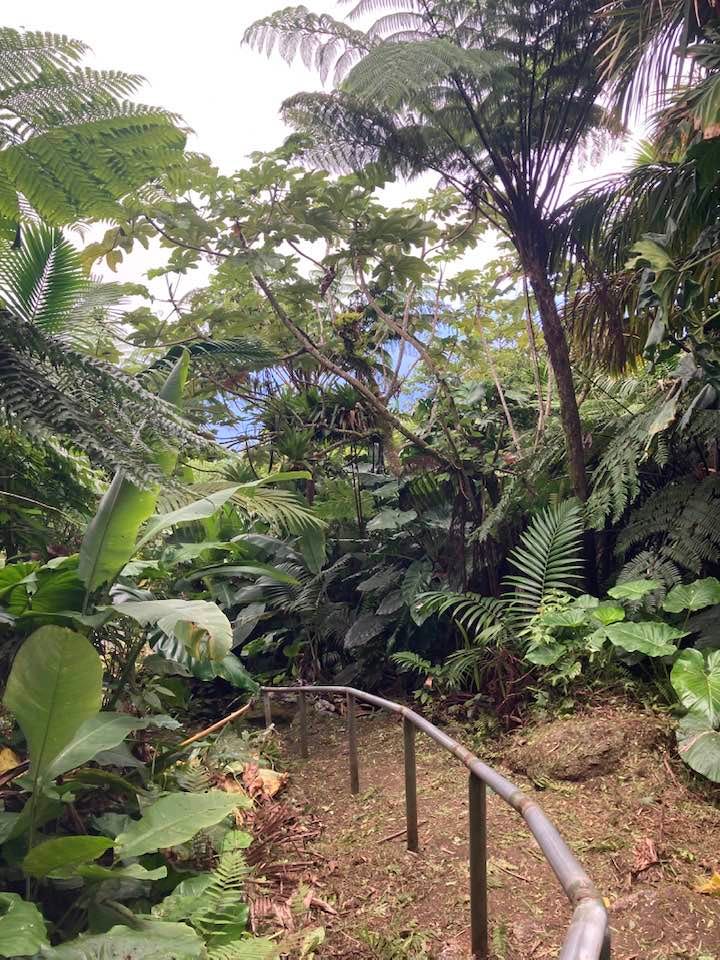
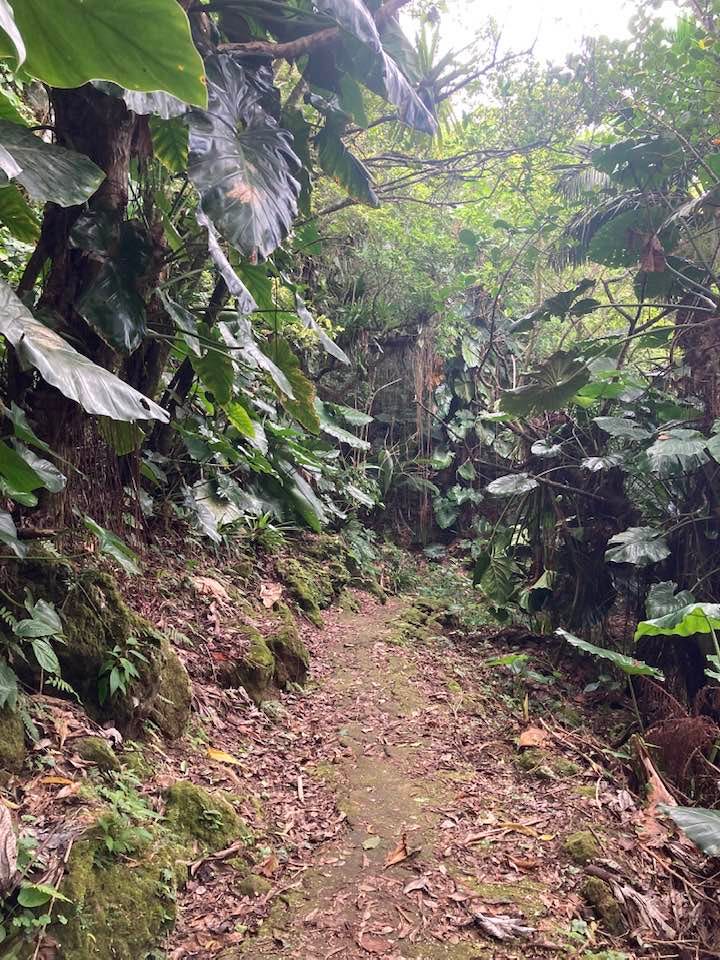
There were many participants who literally ran for this trail run; I was not one of them. My best was a very brisk walk. I had my second-best time in the four times I’ve done this event.
Still, I was pleased with myself. Just a few months ago, I had broken some bones in my foot, and had spent a few weeks hobbling around in an orthopedic boot, on crutches.
So I was really happy to be able to even attempt this event, let alone finish it with not-my-personal-worst time. And, I didn’t even break anything new!
The foliage around the trail was being cleared by a guy with a weed whacker and a machete at the time. Now, one might think he could have picked a better time to clear the trail than the day of a race, but honestly, it just needs constant maintenance to make is passable and this time was as good as any. We’re in the tropics, stuff grows really fast here, so your smoothest, best-kempt possible trail is going to look something like this:
And after all this work with weed whackers and machetes, in just a few weeks it would be completely overgrown again if the guy who clears the trail abandoned his task. There is only one time that I’ve hiked this trail that you could see through the forest to individual trees, and that was after the hurricanes. Then, trees were denuded of branches and leaves, were broken, and the trails (after significant clearing of debris!) looked like this:
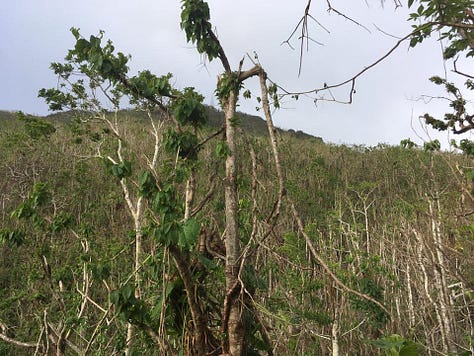

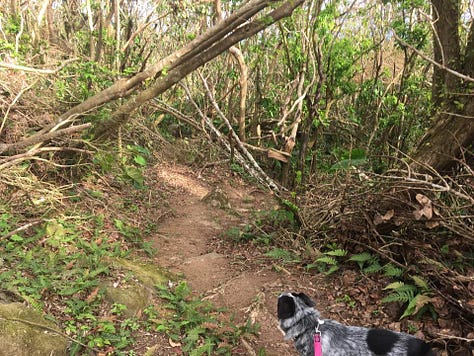
Several months later, you would have never known by looking at the foliage that so much had been destroyed in the past year. It had all grown back.
Several years later, I cannot help but to still be scandalized by this fact. Self-repair after such devastation seems too shocking to be true. It seems like a miracle.
When I started going to church again, and before, when I had stopped, dismayed by the apparent absurdities in the Christian faith, there were words in the Apostles’ Creed that were my stumbling block: “I believe in the resurrection of the body.” Stories about raising the dead must be metaphors at best, and most likely just wishful nonsense. Not the sort of thing that a smart, rational person like I like to think of myself as being might believe.
Except, of course, that living things resurrect from the dead all the time.
If I were to drop a crystal and watch it shatter, we’d all agree that I would be crazy to expect the crystal to patch itself back together. But if I were to break a bone—made of the same ingredients as the shattered crystal—we’d all agree that I would be crazy to expect it to never heal. It’s a miracle so commonplace that we do not recognize it as miraculous.
I know there are objections to describing healing and regrowth as a miracle. One is to point out that healing is natural, that living things could not exist without the ability to self-repair. But that’s just giving a definition, not an explanation. The hand-wave that healing is normal similarly deepens the mystery, rather than resolving it: A miracle that happens every second of every day is much more miraculous than a one-off event.
The other objection is that healing, regrowth, and resurrection are not the same thing: All the broken branches that grew back after the hurricanes were new branches, not resurrected old ones, and the trees that had died were really dead, even if new ones now grow in their place. When I am injured and heal, it is not me who has died, this argument goes, just some of my cells that are replaced by new ones. The real, essential me is still intact. My fractured bone is indeed just a cracked crystal, repaired by living cells that lay down new layers of mineral—it did not repair its stony self. If I were to die, the real me, I would not be resurrected.
But that still begs the question that there is a coherent, singular “real me.” All the actual living parts of a living body are dynamic individuals living and dying in turn. At least half of the cells in my body are microbial, sharing none of my DNA, and with a lifespan measured in hours1. At least 80% of the human cells in my body have none of my DNA, either—they’re red blood cells; possessing no nucleus, they also lack the ability to reproduce or repair themselves, and when they die the metal in their hemoglobin is recycled with the unsentimental efficiency of stripping the catalytic converter from a discarded car. Any human body is a ship of Theseus times a trillion.
So it’s tempting to place the “real me” in my brain, the seat of my consciousness, and tell a story about how brain cells are uniquely timeless, like a Christian would describe the soul. It turns out, though, that brain cell populations also change over time, that dying brain cells can, in fact, be replaced with new ones, and that humans grow new brain neurons well into old age.2 The connections among my brain cells are also in constant flux, the memories they store a palimpsest of crib notes and erasures. My brain cannot be the “real me,” an unchangeable whole whose death is uniquely everlasting. It’s fungible and flibbertigibbet like the rest of my body, individual parts dying and being reborn every minute.
The most durable parts of my body, the parts likely to persist the longest after my death, are my bones. Paleontologists studying hominid fossils are most likely to recover jaw bones, and to draw conclusions about early human size and stature from ancient femurs, when they can find them.3 If the most stable and lasting parts of my body are my skull and thigh bones, should I use them to signify the real me instead, like a flag on a pirate ship?
But even our rocklike bones are malleable. Jaws and thighs are valued by paleontologists because the constant use they are put to causes them to be formed and reformed consistent with the daily life of their users, letting scientists understand better what that ancient daily life was like. Bone deposition and restructuring continues into old age. At present in Western countries, the diseases that cause weakening of the bone like osteoporosis are not predominantly caused by a lack of minerals to make them, but by bony tissue being consumed by the living cell’s of one’s own immune system, like something out of a Ray Bradbury horror story.
I’ve broken my bones enough times since the hurricanes that my doctor worried I might have osteoporosis. I don’t, though—I just have the habit of going on trail runs on slippery, overgrown trails, and sometimes I stumble. It’s important that I keep hiking: a key way to prevent future osteoporosis is to do weight-bearing exercise—that’s how you signal to keep rebuilding your bones after you’ve consumed them, is through use; that’s why paleontologists can learn about the lifestyles of ancient people by looking at their thighbones. But really, the real reason why I spend time on overgrown trails is because I enjoy it. That’s just who I am.
I hike the same trails over and over. They’re always familiar, and always new. I’m constantly struck by living trees forming a scaffolding on which other plants grow:
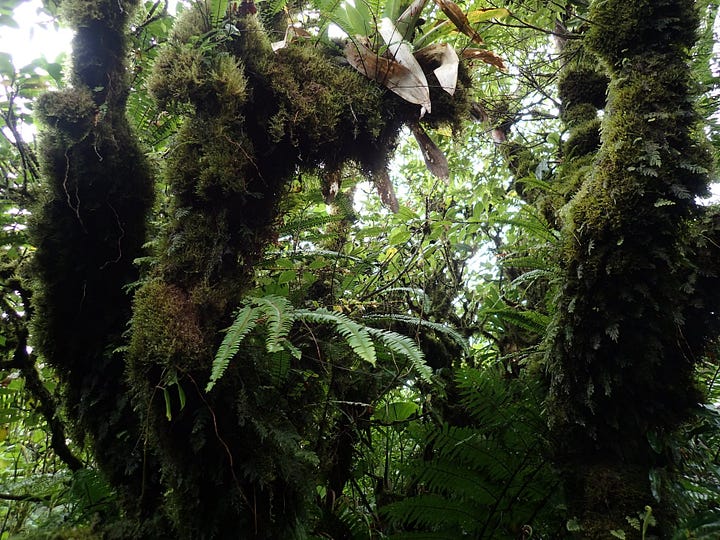

I do not know what trees feel.4 I like to think that trees are not self-conscious, but if they were, would they think of this community of life growing through their branches as their real selves? Would the mahogany see the moss or the mistletoe as part of its own identity, the way I can’t parse my microbiome from myself? After the hurricanes, when their broken branches grew back, would they have mourned their parts that had died, or would they see their regrowth as who they really are, now, and that their essential selves are still intact, the way I have with my broken foot?
For me, not a tree, I cannot see the regrowth of the rainforest as anything but a miracle of resurrection. I have no idea what resurrection would mean for the real me, though, once she dies.
Then again, I don’t even know who the real me is. But I do know some things about her: I know that she’s made of trillions of individuals who have lived and died and been reborn. I know that she can heal herself. I know that she is alive, with all the absurd improbability that entails.
Like all other living things, I am the beneficiary of a miracle so ubiquitous that we don’t even notice it. When it disappears for an instant, we believe in the permanence of the disappearance, rather than hold to the paltry faith that the miracle that has always sustained us will continue. As a smart, rational person, I believed that if I could not explain a thing, it must not be true.
But now I go back on my hikes through the healed forest on my healed foot. I believe in the resurrection of the body, and the life everlasting. How could I not?
For estimates of bacterial and human cell types in the human body, see Sender, Fuchs and Milo, “Revised Estimates for the Number of Human and Bacteria Cells in the Body,” PLoS Biology, 19 August 2016. https://doi.org/10.1371/journal.pbio.1002533
While it’s hard to study, there is mounting evidence that brain cells continue to regenerate, at least in some brain regions in elderly people. See, for instance, Boldrini et al. “Human Hippocampal Neurogenesis Persists Throughout Aging,” Cell: Stem Cell, 5 April 2018. https://doi.org/10.1016/j.stem.2018.03.015
For a shockingly lovely meditation about what paleontologists can learn from mandibles and femurs, art, and what it means to be human I highly recommend this piece by Adam Nathan on Inner Life.
Mallatt et al., “Debunking a myth: Plant Consciousness,” Protoplasma, 2021, 10.1007/s00709-020-01579-w make the traditional case that plants cannot feel while reviewing the arguments for consciousness in plants. The main point I get out of this article, though, is how little we understand what we mean by “consciousness,” “self,” or even “living organism” when we try to pull our understanding of mechanism apart from our experience of these things. If trees are in any way conscious, I pray with Chloe Hope at Death and Birds: “God, I hope this is how trees feel.”




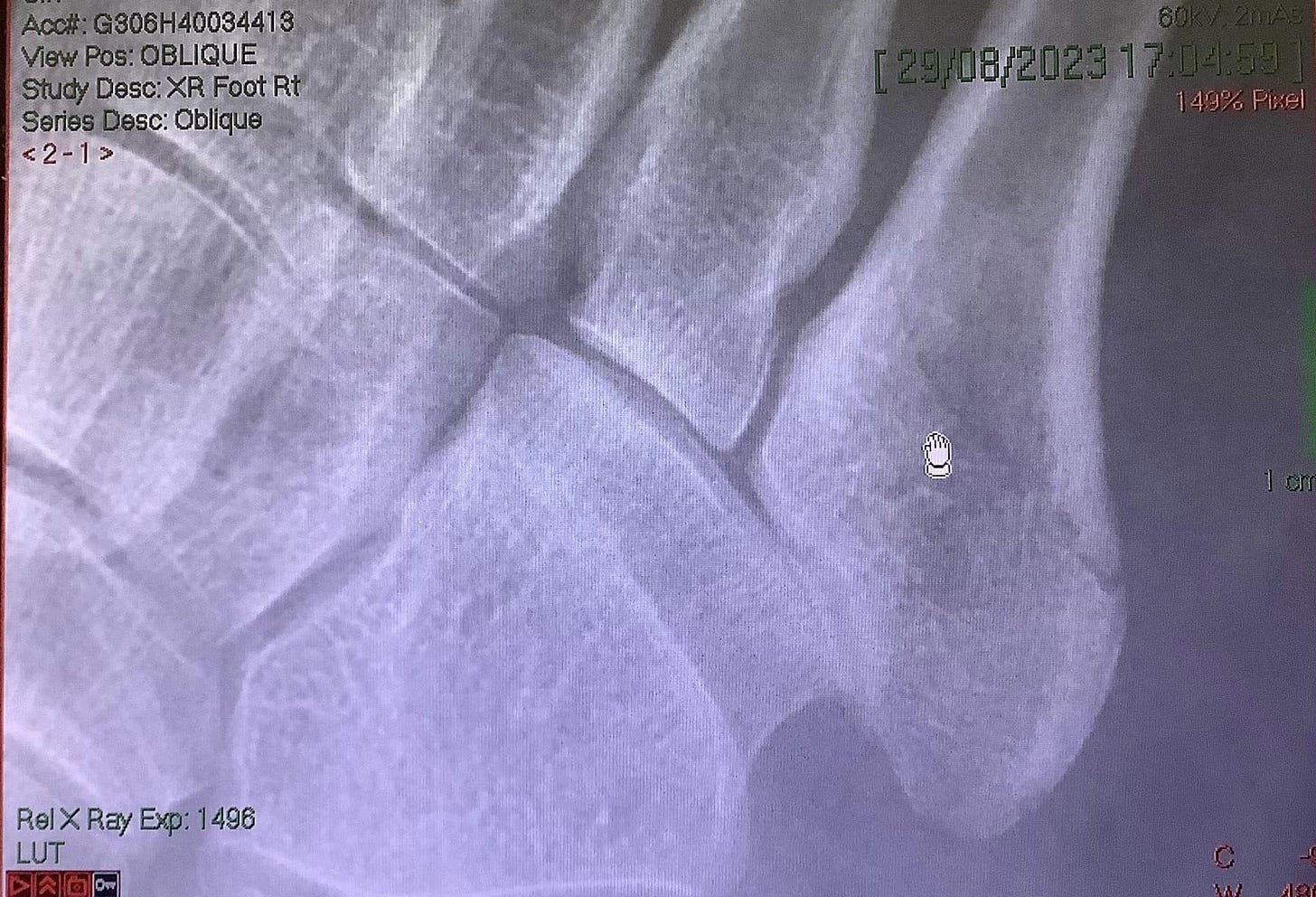
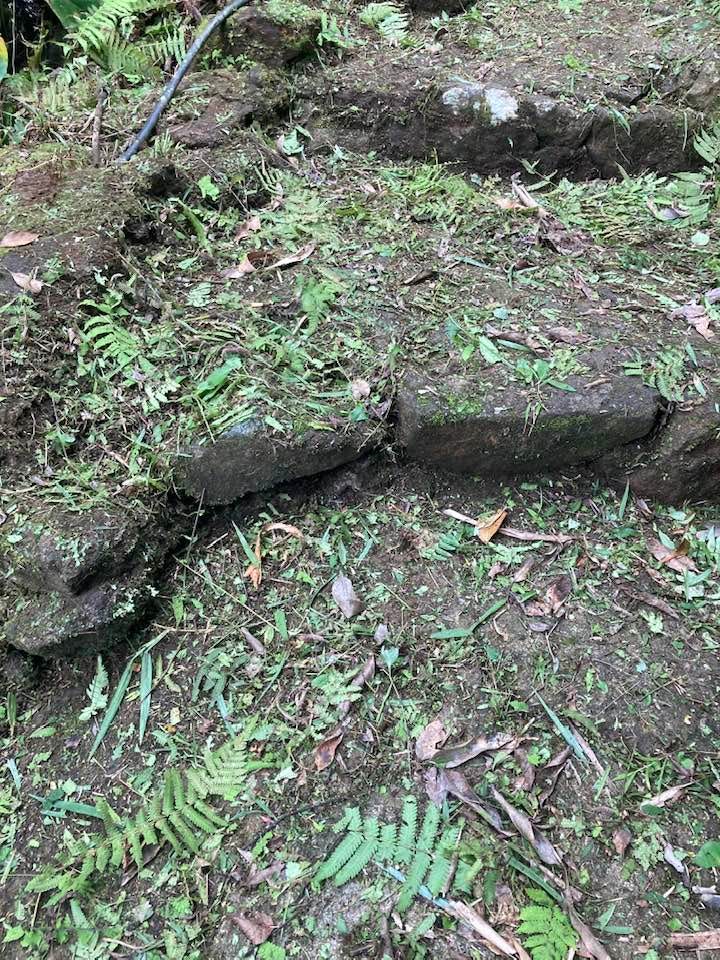
A wonderfully thoughtful and thought-provoking essay… I thoroughly enjoyed it. Sincerely, Frederick
I often think about the reason we don't see miracles is because of our relationship to time. If a flower bloomed from a seed in the span of a second, we would believe we'd seen a miracle. We'd watch our own bodies grow and disintegrate in a hallucinatory rush -- which is to say, and I think I'm agreeing with you here -- that we're floating in sea of the miraculous.